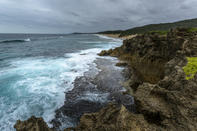iSimangaliso at a Glance
‘The Wetland Park must be the only place on the globe where the world’s oldest land mammal (the Rhinoceros) and the world’s biggest terrestrial animal (the Elephant) share an ecosystem with the world’s oldest fish (the Coelacanth) and the world’s biggest marine mammal (the Whale).’ - Nelson Mandela Cape Vidal in the iSimangaliso Wetland Park is a KwaZulu-Natal institution.

Offering a unique bush, beach and town combination, it’s a family favourite. The iSimangaliso Wetland Park was declared South Africa’s first World Heritage Site in 1999 and recognizes its global value as a place with great natural beauty, important biodiversity and a site of vital ecological processes. The 332,000 hectare park contains three major lake systems, eight interlinking ecosystems, a 700-year-old fishing culture, most of South Africa’s remaining swamp forests, Africa’s largest estuarine system, 526 bird species and 25,000-year-old coastal dunes.
The park is managed by iSimangaliso Wetland Park Authority in conjunction with Ezemvelo KZN which administers the various tourism components and the conservation element, as well as local stakeholders, such as the Bhangazi community, the original inhabitants of Eastern Shores. It is a complicated arrangement that seeks a balance between conservation and benefits to the local communities. As such, it’s a model for how many parks in Africa will be run in the future.
The development of iSimangaliso is ongoing. More than 14,000 hectares of commercial plantations have been removed and the land rehabilitated. Game species such as elephant, black and white rhino, buffalo, cheetah and wild dog have been reintroduced. iSimangaliso means ‘miracle and wonder’ in Zulu. It’s not difficult to see why.
By Justin Fox Cape Vidal (35km from the town of St Lucia in the KwaZulu-Natal province) is a magnificent coastal resort that really has the best of both w...
Cape Vidal (35km from the town of St Lucia in the KwaZulu-Natal province) is a magnificent coastal resort that really has the best of both w... The park has excellent biodiversity, containing marine, coastal, lake, estuarine, forest, wetland, savanna and grassland ecosystems, interwo...
The park has excellent biodiversity, containing marine, coastal, lake, estuarine, forest, wetland, savanna and grassland ecosystems, interwo... The accommodation in iSimangaliso Wetland Park, like the area itself is very varied, from idyllic beach lodges raised on stilts, romantic su...
The accommodation in iSimangaliso Wetland Park, like the area itself is very varied, from idyllic beach lodges raised on stilts, romantic su... The Mziki Hiking Trails’ overnight hut in iSimangaliso Wetland Park originally built as an observation and radar post by the U-boat-huntin...
The Mziki Hiking Trails’ overnight hut in iSimangaliso Wetland Park originally built as an observation and radar post by the U-boat-huntin... The Greater St Lucia Wetland Park, now the iSimangaliso Wetland Park, was declared a World Heritage Site in 1999....
The Greater St Lucia Wetland Park, now the iSimangaliso Wetland Park, was declared a World Heritage Site in 1999.... The fact is that the locals, when referring to Kosi Bay, in fact mean a region known as Nkosi’s (or The King’s) Bay. The closest town is...
The fact is that the locals, when referring to Kosi Bay, in fact mean a region known as Nkosi’s (or The King’s) Bay. The closest town is... Sodwana Bay is situated in one of South Africa’s Marine Protected Areas. Located approximately 500 kilometres north of Durban on the north...
Sodwana Bay is situated in one of South Africa’s Marine Protected Areas. Located approximately 500 kilometres north of Durban on the north... St Lucia is situated 75 km north of Richards Bay on the KwaZulu-Natal’s Elephant Coast. The town’s claim to fame as Africa’s largest e...
St Lucia is situated 75 km north of Richards Bay on the KwaZulu-Natal’s Elephant Coast. The town’s claim to fame as Africa’s largest e...